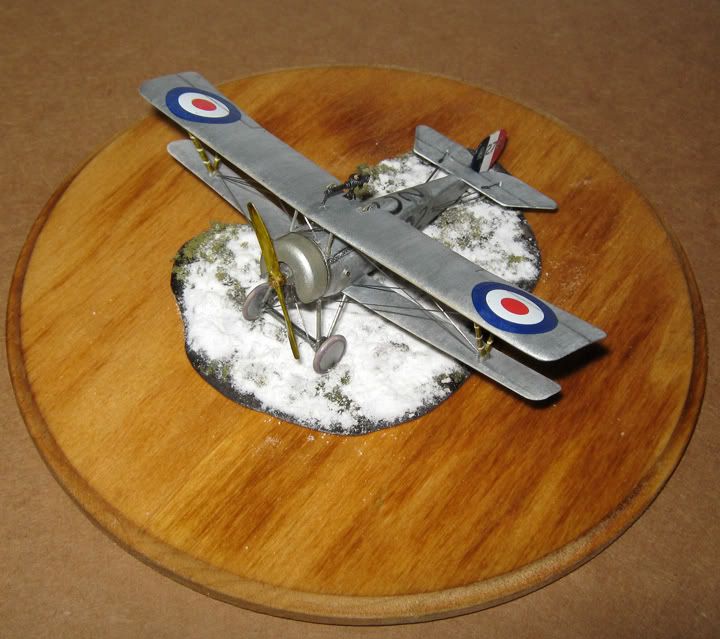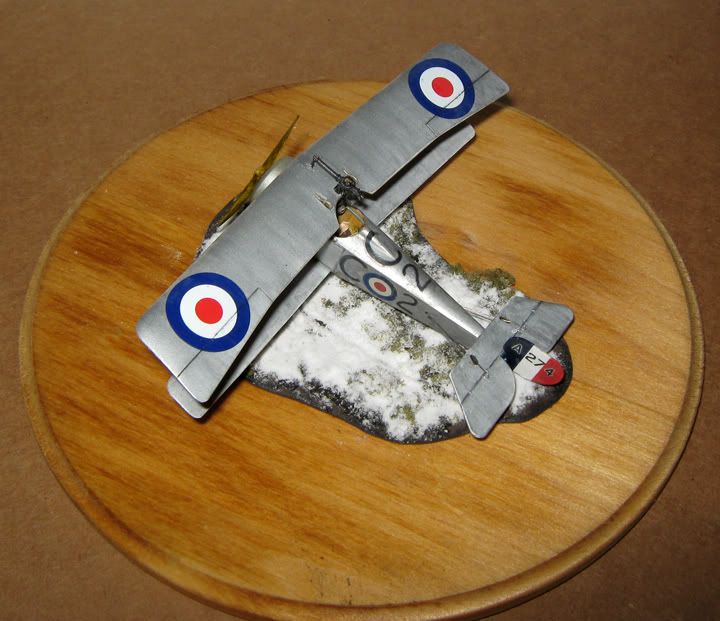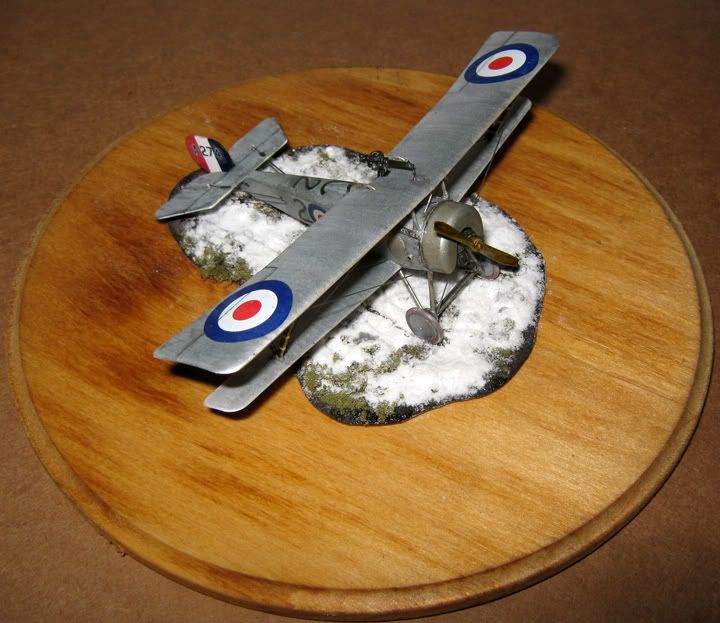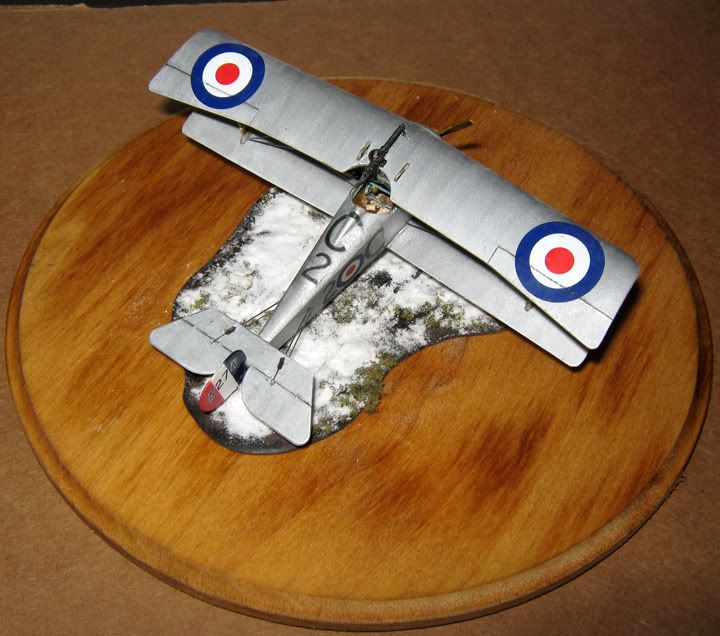This is Nieuport 17 A274, No. 2 of C Flight, 60 Squadron, in December of 1916.

This build follows the 'centerfold' of Mr. Alex Revell's British Fighter Units, 1914-1916, an old Osprey AirCam number, which is about the most beautiful drawing of an aeroplane I have ever seen. I wanted to make a model from that drawing when I first saw it, easily twenty years ago, and even though at that time making models was very far from my mind.
60 Squadron was something of a hard-luck unit in its early days, having been formed on Morane-Saulnier types and taking very heavy casualties during the Somme. It was actually taken off the line during that battle, and had its various Moranes replaced by Nieuport Scouts, both 110hp thirteen meter types (N.16), and fifteen meter types (N.17). The latter was at the time far and away the best fighting scout available to the Royal Flying Corps, although in French service it was already beginning to cede predominance to the new S.P.A.D. VII.

When the Battle of the Somme had ground to a halt in mid-November, 60 Squadron went into winter quarters at Savy, west of Arras. It was flying from here that this machine, A274, flown by Lt. Meintjies, was involved in an incident in which comedy and tragedy were inextricably mingled, and of a sort peculiar to the earliest days of air fighting.
The weather at the start of December had been real 'flier's weather', keeping aircraft grounded all along the front. When the sky cleared and the air stilled on 11 December, both the need of army staffs for fresh intelligence and the animal spirits of young men cooped indoors nearly a fortnight ensured there would be a good many machines in the sky.

And so, among others, several machines from Feldfliegerabteilung 201 took off that morning on various missions, and C flight of 60 Squadron took off on an offensive patrol. Over Dainville, behind the English lines, the six English Nieuports, commanded by Capt. Grenfell, with Lts. Meintjes, Caldwell, Daly, Whitehead, and Weedon, encountered a lone Albatros C.III, in which Oblt. Baldamas was observer, piloted by airman Ruwe.
The English fliers attacked as one; at some point in the fusillade the Albatros was observed to be diving for the ground, but still under control. Airman Ruwe, ordered to descend by his officer, who had been shot in the foot, managed a good enough landing in one of the small, snow-covered fields below. His descent had attracted the attention of some infantry nearby, who hurried to the scene, and the pilots of C flight, elated by the sight of an intact machine brought to earth, came down to land near the German.
The snow cover concealed some very irregular ground in the fields. Four of the C flight Nieuports pranged their landings badly, with Capt. Grenfell breaking his ankle. Airman Ruwe had got his officer out of the Albatros, and under the bemused gaze of a small crowd of Canadian infantry gathered by the spectacle, returned to set fire to his aeroplane. He had evidently forgotten that Oblt. Baldamas had stowed a supply of small bombs for targets of opportunity, for no sooner had he got a flame going than there was a large explosion. Several of the Canadians were killed, more wounded; Airman Ruwe, by the machine, was torn up badly but lived long enough to be taken to an aid station nearby at Agny before he died.

Lt. Meintjes was promoted Captain, and succeeded to command of C flight with Capt. Grenfell invalided out. Nieuport A.274, No. 2 of C flight, went to Lt. Fry, newly joining C flight. He flew it until he was sent back to England in the middle of February, and in March, a new pilot trying to land it across a stiff wind wrecked it, and it was struck of charge and dismantled for spares.

This was built a few years ago, but I recently had occasion to take a look at it again, and still like it. The 1/72 Eduard N.17 kit is a very nice little item. It includes the horseshoe cowling as an alternative piece. Over-all, fit is extraordinarily good, with this one caveat: the interplane struts are designed to fit into sockets in the lower wing, and the 'male' fitting on the bottom of the struts is too large for the receiving socket. Some combination of beveling the edges of the strut piece and the socket, and sanding down the bottom of the strut pieces, should be employed. I broke one of the cabane struts getting it off the sprue, and had to make a replacement. I also had to replace the rudder, but that was owing to decal difficulties (the stripe decals would not stick, and crumbled when trimmed at the edges, and I find it easier to paint stripes on a white background, which a scratched piece made from styrene sheet provides). The serial on the rudder is from an old Modeldecal sheet of English serials in various sizes, with some white outlines. The roundels are from a sheet of ExtraDecal D-type roundels, which the late Mr. David Lee, a splendid fellow who signed on as 'Bristol Scout', was kind enough to send me over from England. The Lewis with casing is from a Roden kit, the Aldis sight is scratched, as is the windscreen. I pierced the horizontal stabilizer for the elevator control wires. The cockpit need a bit of detailing, which can be easily done (I used a Tom's Modelworks set, with some home-made trimmings). Though the kit piece has the heel-slides right on the floor, rather than above it, it is not worth making a replacement piece, as the 'elevated' effect can be gotten for the eye by painting the floor a much darker wood than the slides are painted. The tactical markings are home-made, the first shot wife took at doing these for me.
I want to thank Mr. Russ Gannon, over on the old Aerodrome, for providing from his copious researches the details of the German crew in the events of 11/12/16.